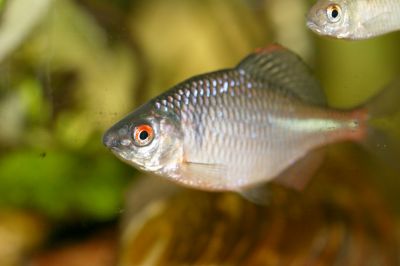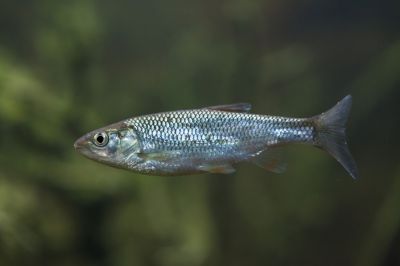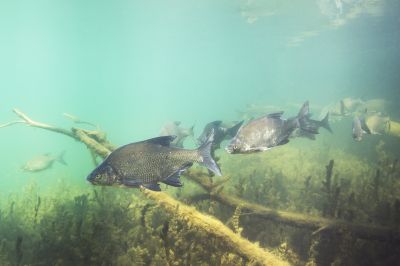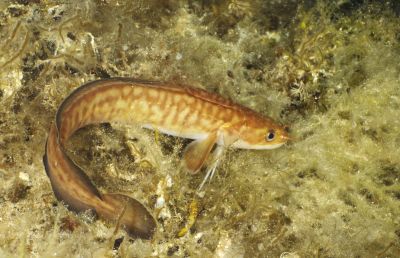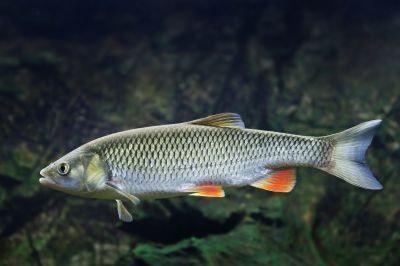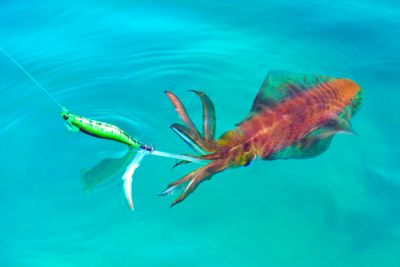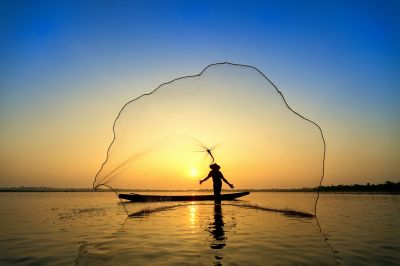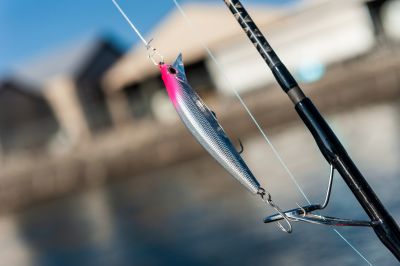Discover everything to fish in Tickhill
Find the best moment to go fishing in Tickhill, the most caught species, the techniques used, go fish with anglers nearby, find a fishing charter or guide, save your spots and discover new ones.
Go for it!Fishing spots mapDiscover the best fishing spots in Tickhill
Fishing in Tickhill
What can I fish there ?Join our 744 fishermen in Tickhill in South Yorkshire. The fishing forecast is currently 4.9. The most caught fishes here are the roach fish , the stone loach, the grayling and the pumpkinseed fish. Come try the most famous fishing techniques like the fishing squid with jig on board, fishing with bombette, jig fishing or cast fishing for mackerel or how to catch smelt with square net?.

Fishing forecast : go fishing at the best time!
3.9
17h40
It starts to bite,
but games are not done.
Exclusiveness
The fishing forecast
Discover the scientific algorithm that gives you the best moment to go fishing at Tickhill !
This is a score calculated according to about forty criteria: moon, weather conditions, atmospheric pressure, tides, swell ...
. Forecast calculated at 4 days

Most caught fish species in Tickhill Top species caught by Club members
Top species caught by Club members
N°1 | The Roach fish
The Roach fish belongs to the Cyprinidae Family. The current size is 10 to 30 cm and the weight is 10 to 200 g. Some individuals can reach 50 cm for a weight of 2 kg. Life expectancy is about ten years (maximum 14 years). The breeding of the roach takes place from April to June/July. Fertility is 350000 eggs per kg of weight. It can be fished all year round. Roach is one of the most common and widespread fish in slow-moving lakes and rivers. It lives in schools of individuals of approximately the same size. These benches can be composed of hundreds of roaches. It is easily identifiable by the diver: the silvery appearance of his body, the eyes and red fins allow him to identify roaches and rotengles. A closer look at the position of the dorsal and ventral fins will then make the difference between the two species. If these two fins are upright, it is the roach.
Fishing period : All year
Minimum size : x
Difficulty : ![]()
![]()
![]()
![]()
![]()
N°2 | The Stone Loach
The Stone Loach belongs to the Balitoridae family. The current size of the Stone loach is about 10-12 cm and maximum 20 cm. Its longevity is 5 to 6 years. The breeding period takes place between April and July. Fertility is 50,000 to 80,000 eggs. Fishing is allowed from June to March. The stone loach has an elongated body, subcylindrical in its front part and covered with tiny scales. The head is broad and flattened. The mouth is equipped with three pairs of barbells on the upper lip. She does not have an erectile spine under her eye. The caudal fin is slightly indented, almost straight and punctuated with black. The back is brownish in color, the flanks are yellowish and the belly is clear. A dark band is present at the base of the caudal fin.
Fishing period : All year
Minimum size : no restriction
Difficulty : ![]()
![]()
![]()
![]()
![]()
N°3 | Barbel Fish
The Barbel fish belongs to the Cyprinids Family. Its maximum weight is 9 kg, and its maximum size is 90 cm but sometimes, it can reach 1 m. It can live 15 years. The Spawning period starts in May and end in July. It can lay up to 9,000 eggs. You can fish Barbel all year. The minimal weight catch is 3 kg. The barbel fish is hard to catch especially in an area where it feels at ease. The Barbel fish, with its streamlined body, shows its perfect adaptation to rivers animated by a more or less rapid stream. Depending on its layout, its color, which may be different, is uniform and slightly lighter on the belly. Barbels are sometimes "grey", sometimes "greenish", and sometimes "golden". Its snout is characteristic and clearly protrudes from its mouth. Note that the dorsal fin has a highly ossified thorny radius.
Fishing period : all year
Minimum size : 3 kg
Difficulty : ![]()
![]()
![]()
![]()
![]()
N°4 | Bitterling Fish
The Bitterling fish is a freshwater fish and belongs to the Cyprinidae family. Its scientific name is Rhodeus Amarus. The current size of the bitterling fish is 5-6 cm. Some individuals can reach a maximum height of 11 cm and a weight of 10 g. This species is one of the smallest Cyprinid in Europe. It lives on average from 2 to 3 years. The spawning period is between April and June. It lays 40 to 100 oocytes. This fish is easy to catch due to its small size. The bitterling is a small fish whose body is high and laterally compressed. The lateral line is short or incomplete. The scales on the back have a grey-green coloring. The sides are clear with silvery reflections. During the breeding period the silver coloration changes to a pink to bright red color with a dark blue sideband. Sexual dimorphism occurs between the male and female during reproduction. A 5 to 8 mm laying tube (ovipositor) develops in the female, which allows her to lay her eggs in the gill cavity of freshwater mussels. The male has a higher body than the female and its colors become brighter during the breeding season. The bitterling fish's eyes are quite large. Its mouth is small, oblique and the upper jaw protrudes beyond the lower jaw. The anal and dorsal fins have a short base and 8 to 10 branched rays.
Fishing period : prohibited all year
Minimum size : not available
Difficulty : ![]()
![]()
![]()
![]()
![]()
N°5 | Bleak Fish
The Bleak fish is a Cyprinidae. In general, its average size is 10 to 15 cm and its weight is 15 to 50 g. However, some individuals can reach up to 60 g for a size of 25 cm. The bleak has a lifespan of 6-7 years. The spawning period is between April and August. It can lay up to 7000 spawns. You can fish bleak from June to September. This fish swims quite fast and offers a little resistance during the catch. The bleak is a fish with an elongated body that is very compressed laterally, allowing it to have a high velocity. The upper jaw is shorter than the lower jaw. The mouth of the bleak is oriented upwards (above), a typical character of fish that seek their food on the surface. The caudal fin is strongly indented and the caudal peduncle is thin. The dorsal fin is inserted behind the pelvic fins and has a shorter base than the dorsal fin. Its name refers to the bright white color of its scales, which gives the bleak a metallic sheen. Its back is darker greenish-blue, its sides are silvery white and its fins are pale grey. During the breeding season, nuptial tubers appear on the backs and sides of males and their fins become orange.
Fishing period : June to September
Minimum size : 10 cm
Difficulty : ![]()
![]()
![]()
![]()
![]()
N°6 | Brown Trout
The Brown Trout belongs to the Salmonidae family. According to the location, the adult size varies from 25 cm to 80 cm for 300 to 800 g. It lives for 3 to 6 years. The spawning period starts in October and end in January. The female can lay up to 4000 eggs. The fishing period is open from the second Saturday of March until the third Sunday of September. This fish is not hard to catch but the fishing needs complex skills. Depending on its environment, the brown trout have a very variable color, but the brown trout, as its name shows, is rather brown with scattered black and red spots, depending on the spawners. It has a certain mimicry according to the bottom of its living spaces since the dominant brown will become a green dress if it lives close to the banks where yellow and even sometimes silvery white will mix. It has a "useless" adipose fin between the dorsal fin and the caudal fin. The head is tapered, strong and has a powerful jaw. Its back is a pretty black or night blue.
Fishing period : March to September
Minimum size : no restriction
Difficulty : ![]()
![]()
![]()
![]()
![]()
N°7 | The Bronze Bream
The Bronze bream belongs to the Cyprinidae Family. The current catch size varies between 30 and 50 cm, for a weight of 0.5 and 2.5 kg. Some individuals can reach a maximum height of 80 cm for a weight of 7 kg. It lives between 20 and 25 years. It reproduces between April and June and lay 100,000 to 300,000 eggs. The Bronze Bream can be fished all year round in 2nd category streams and is not hard to catch with the right bait. In Europe, there are 2 or 3 types of bream, 5 species and 2 subspecies. The Bronze bream has a very high and strong body flattened laterally. The bushy back, especially in older individuals, is characteristic of this fish. Its body is covered with large scales and mucus. The Bronze bream has a fairly small eye compared to the size of the muzzle. The mouth is small, oblique, barbless and protractile. The upper jaw protrudes beyond the lower jaw. Teeth are subject to seasonal replacement. The anal fin is very long and has 23-30 soft rays. On the other hand, the dorsal fin is short and inserted behind the pelvic fins. The caudal fin is very indented with the lower lobe longer than the upper lobe.
Fishing period : All year
Minimum size : 30 cm
Difficulty : ![]()
![]()
![]()
![]()
![]()
N°8 | The Bullhead fish
The Bullhead fish belongs to the Ictaluridae family. This species generally measures 15 to 20 cm, but can reach a maximum of 45 cm for a weight of 2 kg. It can live up to 6 years. It breeds in May-June and lays up to 5000 eggs. It can be fished all year. It is a scaleless fish with bare, viscous skin. Its naked body is elongated and has thousands of sensory cells (electro-receptor cells) that are a particular feature of the species. He has a large flattened head, a very wide mouth with large lips and 8 barbels, 6 of which hang, and 2 are located behind the nostrils. Its pectoral fins have sharp spines that are dangerous. Similarly, its first dorsal fin has a sharp sting. It also has a short fat fin (between the dorsal and caudal fins). Its brown back is almost black or greenish brown, its sides lighter, its belly yellowish white.
Fishing period : All year
Minimum size : 20 cm
Difficulty : ![]()
![]()
![]()
![]()
![]()
N°9 | The Burbot
The Burbot fish belongs to the Lotidae family. The burbot can measure 30 to 120 cm and weigh up to 3 kg. It can live from 15 to 20 years. It breeds from December to March and can lay up to one million eggs. It can be fished all year round. The body is cylindrical, elongated, slightly compressed towards the tail, covered with small scales covered with a thick layer of mucus. The back is greenish brown or yellowish with darker mottling, with a gradation becoming lighter on the sides. The belly is yellowish white. The short, rounded pectoral fins, close to the head, overhang the ventral side with their first very elongated radius. The first dorsal fin is short, the second, very long, continues until the birth of the caudal, which is rounded. The lower jaw has a single long barbel and the nostrils have two fairly distant orifices, each with a small barbel. The mouth is wide, with many fine teeth.
Fishing period : All year
Minimum size : 50 cm
Difficulty : ![]()
![]()
![]()
![]()
![]()
N°10 | The Chub fish
The chub fish belongs to the family of Cyprinidae. The common catch size of the chub fish varies from 15 to 30 cm, but it can reach 80 cm for a weight of 8 kg. The longevity is estimated at about ten years. The reproduction of the chub takes place between April and June. The female lays 20,000 to 100,000 eggs. It can be fished from July to Mars. The body is long and cylindrical with a terminal mouth, pointing upwards, with large lips. The big head has a flat forehead. The large, black-edged scales give it a reticulated appearance. The anal fin has a convex rear edge. The back and upper part of the head are greyish-green to brown in color; the flanks have silvery or even golden highlights; the belly is whitish. The fins are grey except for the bellies and the pale red anal fin.
Fishing period : From July to February
Minimum size : 15 cm
Difficulty : ![]()
![]()
![]()
![]()
![]()
N°11 | The Common Carp
The Common Carp belongs to the Cyprinidae family. Its average size is 40 to 60 cm (up to 1 meter for some specimens) with an average weight of 6 to 8 kilos (up to 37 kilos for some specimens). It can live up to 20 years in the wild. Common carp breed from spring to summer. The female lays 250,000 eggs per kg of weight. Carp can be fished all year round in the 2nd category rivers! It is a massive fish, green in color (except the koi). Its head is conical, its mouth is protractile, it has no teeth but has 2 pairs of barbels. Its growth is fast; it exceeds one kilo in 3 years. The fins are strong and grey, except for the pelvic and anal fins, which are slightly orange.
Fishing period : All year
Minimum size : 40 cm
Difficulty : ![]()
![]()
![]()
![]()
![]()
N°12 | The Crucian Carp
The Crucian Carp belongs to the Cyprinidae family. Its average size is 45 cm for 3 kg. It can live up to 15 years. It breeds from Mai to June. The female lays up to 300,000 oocytes. It can be fished from spring to fall. The Crucian carp is ovoid, stocky and laterally compressed. The protruding back gives it a high body. The most common specimens have an average size of 15 cm and a weight of about 250 g, but they can reach more than 50 cm and a weight of 4 kg. The head, small and conical, has no barbels. The pectoral and ventral fins and the anus are slightly rounded and have a reddish colour. The dorsal fin is characterized by a convex line. Finally, the caudal is slightly indented, and has 20 soft rays. Large scales cover the body and 31 to 36 scales run along the lateral line. Overall, it is greenish in color, dark on the back, with golden reflections on the sides and lighter on the belly. A black spot at the base of the caudal fin characterizes juveniles of this species. This stain disappears with age.
Fishing period : Spring to fall
Minimum size : 30 cm
Difficulty : ![]()
![]()
![]()
![]()
![]()
N°1 | The Roach fish
The Roach fish belongs to the Cyprinidae Family. The current size is 10 to 30 cm and the weight is 10 to 200 g. Some individuals can reach 50 cm for a weight of 2 kg. Life expectancy is about ten years (maximum 14 years). The breeding of the roach takes place from April to June/July. Fertility is 350000 eggs per kg of weight. It can be fished all year round. Roach is one of the most common and widespread fish in slow-moving lakes and rivers. It lives in schools of individuals of approximately the same size. These benches can be composed of hundreds of roaches. It is easily identifiable by the diver: the silvery appearance of his body, the eyes and red fins allow him to identify roaches and rotengles. A closer look at the position of the dorsal and ventral fins will then make the difference between the two species. If these two fins are upright, it is the roach.
Fishing period : All year
Minimum size : x
Difficulty : ![]()
![]()
![]()
![]()
![]()
N°2 | The Stone Loach
The Stone Loach belongs to the Balitoridae family. The current size of the Stone loach is about 10-12 cm and maximum 20 cm. Its longevity is 5 to 6 years. The breeding period takes place between April and July. Fertility is 50,000 to 80,000 eggs. Fishing is allowed from June to March. The stone loach has an elongated body, subcylindrical in its front part and covered with tiny scales. The head is broad and flattened. The mouth is equipped with three pairs of barbells on the upper lip. She does not have an erectile spine under her eye. The caudal fin is slightly indented, almost straight and punctuated with black. The back is brownish in color, the flanks are yellowish and the belly is clear. A dark band is present at the base of the caudal fin.
Fishing period : All year
Minimum size : no restriction
Difficulty : ![]()
![]()
![]()
![]()
![]()
N°3 | Barbel Fish
The Barbel fish belongs to the Cyprinids Family. Its maximum weight is 9 kg, and its maximum size is 90 cm but sometimes, it can reach 1 m. It can live 15 years. The Spawning period starts in May and end in July. It can lay up to 9,000 eggs. You can fish Barbel all year. The minimal weight catch is 3 kg. The barbel fish is hard to catch especially in an area where it feels at ease. The Barbel fish, with its streamlined body, shows its perfect adaptation to rivers animated by a more or less rapid stream. Depending on its layout, its color, which may be different, is uniform and slightly lighter on the belly. Barbels are sometimes "grey", sometimes "greenish", and sometimes "golden". Its snout is characteristic and clearly protrudes from its mouth. Note that the dorsal fin has a highly ossified thorny radius.
Fishing period : all year
Minimum size : 3 kg
Difficulty : ![]()
![]()
![]()
![]()
![]()
N°4 | Bitterling Fish
The Bitterling fish is a freshwater fish and belongs to the Cyprinidae family. Its scientific name is Rhodeus Amarus. The current size of the bitterling fish is 5-6 cm. Some individuals can reach a maximum height of 11 cm and a weight of 10 g. This species is one of the smallest Cyprinid in Europe. It lives on average from 2 to 3 years. The spawning period is between April and June. It lays 40 to 100 oocytes. This fish is easy to catch due to its small size. The bitterling is a small fish whose body is high and laterally compressed. The lateral line is short or incomplete. The scales on the back have a grey-green coloring. The sides are clear with silvery reflections. During the breeding period the silver coloration changes to a pink to bright red color with a dark blue sideband. Sexual dimorphism occurs between the male and female during reproduction. A 5 to 8 mm laying tube (ovipositor) develops in the female, which allows her to lay her eggs in the gill cavity of freshwater mussels. The male has a higher body than the female and its colors become brighter during the breeding season. The bitterling fish's eyes are quite large. Its mouth is small, oblique and the upper jaw protrudes beyond the lower jaw. The anal and dorsal fins have a short base and 8 to 10 branched rays.
Fishing period : prohibited all year
Minimum size : not available
Difficulty : ![]()
![]()
![]()
![]()
![]()
N°5 | Bleak Fish
The Bleak fish is a Cyprinidae. In general, its average size is 10 to 15 cm and its weight is 15 to 50 g. However, some individuals can reach up to 60 g for a size of 25 cm. The bleak has a lifespan of 6-7 years. The spawning period is between April and August. It can lay up to 7000 spawns. You can fish bleak from June to September. This fish swims quite fast and offers a little resistance during the catch. The bleak is a fish with an elongated body that is very compressed laterally, allowing it to have a high velocity. The upper jaw is shorter than the lower jaw. The mouth of the bleak is oriented upwards (above), a typical character of fish that seek their food on the surface. The caudal fin is strongly indented and the caudal peduncle is thin. The dorsal fin is inserted behind the pelvic fins and has a shorter base than the dorsal fin. Its name refers to the bright white color of its scales, which gives the bleak a metallic sheen. Its back is darker greenish-blue, its sides are silvery white and its fins are pale grey. During the breeding season, nuptial tubers appear on the backs and sides of males and their fins become orange.
Fishing period : June to September
Minimum size : 10 cm
Difficulty : ![]()
![]()
![]()
![]()
![]()
N°6 | Brown Trout
The Brown Trout belongs to the Salmonidae family. According to the location, the adult size varies from 25 cm to 80 cm for 300 to 800 g. It lives for 3 to 6 years. The spawning period starts in October and end in January. The female can lay up to 4000 eggs. The fishing period is open from the second Saturday of March until the third Sunday of September. This fish is not hard to catch but the fishing needs complex skills. Depending on its environment, the brown trout have a very variable color, but the brown trout, as its name shows, is rather brown with scattered black and red spots, depending on the spawners. It has a certain mimicry according to the bottom of its living spaces since the dominant brown will become a green dress if it lives close to the banks where yellow and even sometimes silvery white will mix. It has a "useless" adipose fin between the dorsal fin and the caudal fin. The head is tapered, strong and has a powerful jaw. Its back is a pretty black or night blue.
Fishing period : March to September
Minimum size : no restriction
Difficulty : ![]()
![]()
![]()
![]()
![]()
N°7 | The Bronze Bream
The Bronze bream belongs to the Cyprinidae Family. The current catch size varies between 30 and 50 cm, for a weight of 0.5 and 2.5 kg. Some individuals can reach a maximum height of 80 cm for a weight of 7 kg. It lives between 20 and 25 years. It reproduces between April and June and lay 100,000 to 300,000 eggs. The Bronze Bream can be fished all year round in 2nd category streams and is not hard to catch with the right bait. In Europe, there are 2 or 3 types of bream, 5 species and 2 subspecies. The Bronze bream has a very high and strong body flattened laterally. The bushy back, especially in older individuals, is characteristic of this fish. Its body is covered with large scales and mucus. The Bronze bream has a fairly small eye compared to the size of the muzzle. The mouth is small, oblique, barbless and protractile. The upper jaw protrudes beyond the lower jaw. Teeth are subject to seasonal replacement. The anal fin is very long and has 23-30 soft rays. On the other hand, the dorsal fin is short and inserted behind the pelvic fins. The caudal fin is very indented with the lower lobe longer than the upper lobe.
Fishing period : All year
Minimum size : 30 cm
Difficulty : ![]()
![]()
![]()
![]()
![]()
N°8 | The Bullhead fish
The Bullhead fish belongs to the Ictaluridae family. This species generally measures 15 to 20 cm, but can reach a maximum of 45 cm for a weight of 2 kg. It can live up to 6 years. It breeds in May-June and lays up to 5000 eggs. It can be fished all year. It is a scaleless fish with bare, viscous skin. Its naked body is elongated and has thousands of sensory cells (electro-receptor cells) that are a particular feature of the species. He has a large flattened head, a very wide mouth with large lips and 8 barbels, 6 of which hang, and 2 are located behind the nostrils. Its pectoral fins have sharp spines that are dangerous. Similarly, its first dorsal fin has a sharp sting. It also has a short fat fin (between the dorsal and caudal fins). Its brown back is almost black or greenish brown, its sides lighter, its belly yellowish white.
Fishing period : All year
Minimum size : 20 cm
Difficulty : ![]()
![]()
![]()
![]()
![]()
N°9 | The Burbot
The Burbot fish belongs to the Lotidae family. The burbot can measure 30 to 120 cm and weigh up to 3 kg. It can live from 15 to 20 years. It breeds from December to March and can lay up to one million eggs. It can be fished all year round. The body is cylindrical, elongated, slightly compressed towards the tail, covered with small scales covered with a thick layer of mucus. The back is greenish brown or yellowish with darker mottling, with a gradation becoming lighter on the sides. The belly is yellowish white. The short, rounded pectoral fins, close to the head, overhang the ventral side with their first very elongated radius. The first dorsal fin is short, the second, very long, continues until the birth of the caudal, which is rounded. The lower jaw has a single long barbel and the nostrils have two fairly distant orifices, each with a small barbel. The mouth is wide, with many fine teeth.
Fishing period : All year
Minimum size : 50 cm
Difficulty : ![]()
![]()
![]()
![]()
![]()
N°10 | The Chub fish
The chub fish belongs to the family of Cyprinidae. The common catch size of the chub fish varies from 15 to 30 cm, but it can reach 80 cm for a weight of 8 kg. The longevity is estimated at about ten years. The reproduction of the chub takes place between April and June. The female lays 20,000 to 100,000 eggs. It can be fished from July to Mars. The body is long and cylindrical with a terminal mouth, pointing upwards, with large lips. The big head has a flat forehead. The large, black-edged scales give it a reticulated appearance. The anal fin has a convex rear edge. The back and upper part of the head are greyish-green to brown in color; the flanks have silvery or even golden highlights; the belly is whitish. The fins are grey except for the bellies and the pale red anal fin.
Fishing period : From July to February
Minimum size : 15 cm
Difficulty : ![]()
![]()
![]()
![]()
![]()
N°11 | The Common Carp
The Common Carp belongs to the Cyprinidae family. Its average size is 40 to 60 cm (up to 1 meter for some specimens) with an average weight of 6 to 8 kilos (up to 37 kilos for some specimens). It can live up to 20 years in the wild. Common carp breed from spring to summer. The female lays 250,000 eggs per kg of weight. Carp can be fished all year round in the 2nd category rivers! It is a massive fish, green in color (except the koi). Its head is conical, its mouth is protractile, it has no teeth but has 2 pairs of barbels. Its growth is fast; it exceeds one kilo in 3 years. The fins are strong and grey, except for the pelvic and anal fins, which are slightly orange.
Fishing period : All year
Minimum size : 40 cm
Difficulty : ![]()
![]()
![]()
![]()
![]()
N°12 | The Crucian Carp
The Crucian Carp belongs to the Cyprinidae family. Its average size is 45 cm for 3 kg. It can live up to 15 years. It breeds from Mai to June. The female lays up to 300,000 oocytes. It can be fished from spring to fall. The Crucian carp is ovoid, stocky and laterally compressed. The protruding back gives it a high body. The most common specimens have an average size of 15 cm and a weight of about 250 g, but they can reach more than 50 cm and a weight of 4 kg. The head, small and conical, has no barbels. The pectoral and ventral fins and the anus are slightly rounded and have a reddish colour. The dorsal fin is characterized by a convex line. Finally, the caudal is slightly indented, and has 20 soft rays. Large scales cover the body and 31 to 36 scales run along the lateral line. Overall, it is greenish in color, dark on the back, with golden reflections on the sides and lighter on the belly. A black spot at the base of the caudal fin characterizes juveniles of this species. This stain disappears with age.
Fishing period : Spring to fall
Minimum size : 30 cm
Difficulty : ![]()
![]()
![]()
![]()
![]()

Tickhill - Fishing techniques Top fishing techniques
Top fishing techniques
N°1 | Fishing squid with jig on board
The jig is a lure with a crown of hooks. Ideal for squid fishing, it can sometimes imitate the shape of fish, sometimes that of shrimp, be phosphorescent or bright, brightly colored or not. It requires little equipment and brings a lot of satisfaction thanks to the generally abundant catches, provided that you do not neglect any parameter in the choice of your posts and animations.
N°2 | Fishing with bombette
Bombette fishing is a technique invented by Italian fishermen to fish for trout in lakes. Although this method of fishing is still relatively unknown to some people, it is becoming more and more common nowadays. It is even used for fishing carnivores (perch, pike, pike-perch, pike-perch...) Easy to implement and requiring little preparation time, this fishing technique is perfectly suited both to beginners wishing to learn trout fishing in water bodies, and to experienced fishermen wishing to take advantage of its many possibilities. But what does this technique really consist of? What equipment is suitable for this type of fishing? Here are some useful information that will help you start fishing with a bombette in good conditions.
N°3 | Jig fishing or Cast fishing for mackerel
Mackerel evolve in schools. The challenge is to find the benches. A seagull bite may eventually help you, but the easiest way is to use a sonar. Mackerel move to a depth that varies with water temperature, weather conditions and water transparency. The sonar unit will therefore help you to identify how deep they are moving. In general, mackerel will be found on the surface in calm weather and when the water is clear enough. On the contrary, when the sea is rough, the latter will tend to descend between two waters, or even into deep waters. Once the bank is spotted, you should approach it as discreetly as possible and let yourself drift in such a way as to pass through it (you will turn off the engine, especially if the fish are on the surface). You will let your submachine gun down and animate it in a jigsaw. This means that you will make more or less wide movements with your rod in order to raise and lower your hooks erratically. If the ban moves a little further away, you can also throw your machine gun and bring it back with a little scion blows. Vary the recovery rates and depth to maximize your chances. If the ban is on the surface (you will spot it thanks to the seagulls who will take advantage of the opportunity), opt for a quick recovery and on the surface. It is also a very fun fishing to do in a kayak.
N°4 | How to catch smelt with square net?
Fishing for smelt with square net undoubtedly delights children. It is practiced with the family and is accessible to all generations. It requires no technique and no knowledge. To be tested absolutely!
N°5 | Plug fishing for roach
Bottling, also known as plug fishing, is one of the most common techniques used to catch different types of fish, including roach. However, to avoid being left empty-handed, it is important to choose the right float, to make a good line setting... In short, you must master this fishing method.
N°6 | Surfcasting fishing for Sea bream
To successfully fish sea bream with the surfcasting technique, you need to know the right thing to do. Below are some tips to help.
N°1 | Fishing squid with jig on board
The jig is a lure with a crown of hooks. Ideal for squid fishing, it can sometimes imitate the shape of fish, sometimes that of shrimp, be phosphorescent or bright, brightly colored or not. It requires little equipment and brings a lot of satisfaction thanks to the generally abundant catches, provided that you do not neglect any parameter in the choice of your posts and animations.
N°2 | Fishing with bombette
Bombette fishing is a technique invented by Italian fishermen to fish for trout in lakes. Although this method of fishing is still relatively unknown to some people, it is becoming more and more common nowadays. It is even used for fishing carnivores (perch, pike, pike-perch, pike-perch...) Easy to implement and requiring little preparation time, this fishing technique is perfectly suited both to beginners wishing to learn trout fishing in water bodies, and to experienced fishermen wishing to take advantage of its many possibilities. But what does this technique really consist of? What equipment is suitable for this type of fishing? Here are some useful information that will help you start fishing with a bombette in good conditions.
N°3 | Jig fishing or Cast fishing for mackerel
Mackerel evolve in schools. The challenge is to find the benches. A seagull bite may eventually help you, but the easiest way is to use a sonar. Mackerel move to a depth that varies with water temperature, weather conditions and water transparency. The sonar unit will therefore help you to identify how deep they are moving. In general, mackerel will be found on the surface in calm weather and when the water is clear enough. On the contrary, when the sea is rough, the latter will tend to descend between two waters, or even into deep waters. Once the bank is spotted, you should approach it as discreetly as possible and let yourself drift in such a way as to pass through it (you will turn off the engine, especially if the fish are on the surface). You will let your submachine gun down and animate it in a jigsaw. This means that you will make more or less wide movements with your rod in order to raise and lower your hooks erratically. If the ban moves a little further away, you can also throw your machine gun and bring it back with a little scion blows. Vary the recovery rates and depth to maximize your chances. If the ban is on the surface (you will spot it thanks to the seagulls who will take advantage of the opportunity), opt for a quick recovery and on the surface. It is also a very fun fishing to do in a kayak.
N°4 | How to catch smelt with square net?
Fishing for smelt with square net undoubtedly delights children. It is practiced with the family and is accessible to all generations. It requires no technique and no knowledge. To be tested absolutely!
N°5 | Plug fishing for roach
Bottling, also known as plug fishing, is one of the most common techniques used to catch different types of fish, including roach. However, to avoid being left empty-handed, it is important to choose the right float, to make a good line setting... In short, you must master this fishing method.
N°6 | Surfcasting fishing for Sea bream
To successfully fish sea bream with the surfcasting technique, you need to know the right thing to do. Below are some tips to help.
Fishing near Tickhill
Post
A catch
Save a catch to start your fishing logbook. You will be able to to share it with the community if yo want!
A fishing trip
Post an ad to go fishing with other fishermen
A message
Share a thought, a question with the community





